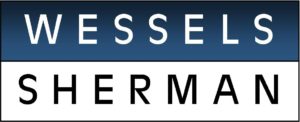Protecting Employers Since 1985
"Double-Breasting" Labor Question
March 2014
By: Phoebe A. Taurick, Esq. & Richard H. Wessels, Esq.
“I own an HVAC company. In Chicago, you pretty much have to be union to work on the big commercial construction projects, particularly downtown. This is not true out in the suburbs or for the less highly visible work. I have both a union branch and a non-union branch which I believe we keep well separated. What are your thoughts as to how I might be challenged on this?”
Joint Answer from Phoebe A. Taurick and Richard H. Wessels
Phoebe Taurick of our Minnesota office has been doing some in-depth research on this issue in connection with some client issues there. Here are her comments:
This sort of structure is referred to as a “dual shop” or a “double-breasted” operation. Challenges to these types of operations often come in one of three forms: (1) unfair labor practice charges under the National Labor Relations Act (NLRA); (2) grievance and arbitration under the collective bargaining agreement signed by the union entity; or (3) union trust fund audits.
Challenges Under the NLRA.
If two entities are found to be either a single employer and a single appropriate bargaining unit, or alter egos of each other, then the terms of the collective bargaining agreements signed by one could apply to the other. In addition, both entities would be liable for any unfair labor practices committed by the other entity, and could be liable for other legal obligations incurred by the other company. Along with general unfair labor practice charges that could be imputed to the other entity, double-breasted entities are often specifically challenged with claims of discriminatory diversion of work.
1. The Single Employer Test.
Two separate legal entities will be deemed a single employer under the NLRA if they comprise an integrated enterprise. The NLRB will consider four factors: (1) interrelation of operations; (2) common management; (3) centralized (or common) control of labor relations; and (4) common ownership. No single factor is dispositive, but centralized or common control of labor relations is generally the most important, and because at least some common ownership will almost always be present when the issue arises, that is the least important factor.
For example, in Gerace Construction, Inc., the NLRB found that a parent and subsidiary were not a single employer. In that case, the two companies employed their own managers, but had common directors and stockholders with ultimate control. The open shop subsidiary consulted with the parent company on day-to-day matters; the parent company provided most of the operating capital for the subsidiary; and the subsidiary was housed, rent-free, on the parent’s land. However, because the two companies submitted separate job bids, relied on their own capital, and had separate health and welfare plans and workers’ compensation insurance contracts, the NLRB ultimately found that they were separate.
A single employer finding alone, however, will not invalidate a double-breasted operation; the employees of the two entities must also share a “community of interest” sufficient to constitute an “appropriate bargaining unit.” In making this determination, the NLRB will consider several factors, including: bargaining history; the functional integration of operations; the differences in the types of work and the skills of employees; the extent of centralization of management and supervision – particularly in regard to labor relations, hiring, discipline, and control of day-to-day operations; and the extent of interchange and contact between the groups of employees. Once again, no single factor is dispositive.
2. The Alter Ego Test
Sometimes instead of the single employer test, the NLRB or courts will apply the similar “alter ego” test. In this test, the relevant question is to what extent the two entities have substantially identical management, business purpose, operation, equipment, customers, supervision, and ownership. An important question under this test is whether the employer was motivated by anti-union animus or a desire to avoid obligations under the NLRA in the creation of the non-union entity. Unlike in the single employer test, if two entities are found to be alter egos of each other, there is no requirement for a showing of an appropriate bargaining unit in order to bind the non-union company to the union company’s collective bargaining agreement.
Challenges Under Collective Bargaining Agreements.
Challenges to double-breasted operations are often made under collective bargaining agreements. Specifically, unions will often claim that the terms and conditions of the collective bargaining agreement signed by one entity also apply to the non-union entity. Sometimes, unions will specifically try to implant anti-dual shop clauses into a contract, through a work preservation clause.
In order for a preservation of work agreement to be lawful under the NLRA, it must pass two tests: (1) it must have as its objective the preservation of work traditionally performed by employees represented by the union; and (2) the contracting employer must have the power to give the employees the work in question, or the “right of control.” If the contracting employer doesn’t have the right of control over the employees of the other employer, then it is reasonable to infer that the true purpose of the clause is to unlawfully influence whoever does have that control. The clauses in these two contracts are much more similar to ones that the NLRB has found lawful under the NLRA than the ones that are unlawful. However, just because the clause, on its face is lawful, it could be applied unlawfully – if the union tried to enforce it in a way would try to impermissibly influence another company – rather than to preserve its work. For example, in Rd. Sprinkler Fitters Local Union 669, an Administrative Law Judge for the NLRB found that a union acted unlawfully when it filed a grievance and a lawsuit to enforce a work preservation clause in a contract signed by one entity against two non-union sibling companies, and their non-union parent company. Although three of the companies were commonly owned by the fourth, they had no interrelation of operations and no centralized control of labor relations. Therefore, the motivation behind the attempt to enforce the clause in this manner was not to preserve work performed by employees of the union entity, but rather to acquire work from the non-union entities, which were not controlled by the union entity.
Even with no specific anti-dual shop clause, the non-union entity can be obligated to follow the collective bargaining agreement if the two entities are found to really be a single enterprise, as discussed above. One common challenge is if the non-union entity subcontracts work in a way that would violate the contract if done by the union entity. Subcontracting clauses often restrict the ability of the employer to subcontract out any work coming within the jurisdiction of the unions at the jobsite, unless the subcontractor honors the terms and conditions of the collective bargaining agreements.
Union Trust Fund Audits.
At times, the trustees of a benefit fund will seek to audit the books of both entities in a double-breasted operation, to verify the accuracy of the contributions made under a collective bargaining agreement. A company can face massive liability if the obligations in the collective bargaining agreement are found to apply to both entities, but contributions have only been made on behalf of the employees of the union entity. For example, in Resilient Floor v. M&M Installation, the 9 thCircuit Court of Appeals and the U.S. District Court for the Northern District of California addressed whether a non-union company could be held liable for the withdrawal liability of a commonly owned union company. The 9 th Circuit held that, assuming it is possible to be liable for withdrawal liability on an alter ego theory, and assuming the non-union company was an alter ego of the union company, it could be liable where there is commonality between the union and non-union firms and an abuse of the double-breasted structure to avoid payment of withdrawal liability. The lower court then determined that the alter ego theory is appropriate to determine withdrawal liability and that the two companies were alter egos. Specifically, the court found that the non-union company operated the union company in such a manner to ensure that the non-union company had total control over whether the union company could meet its collective bargaining obligations. Relevant to this determination was that the non-union entity formed the union entity to provide a way to bid on union jobs, and that the union entity had no source of business other than from the non-union company.
Contact us at any of our four Midwest locations
The Midwest's Premier Labor and Employment Law Firm


Schedule your confidential consultation
Contact Wessels Sherman if you would like to speak with one of our experienced labor and workplace attorneys, contact any of our four office locations and schedule a consultation.




